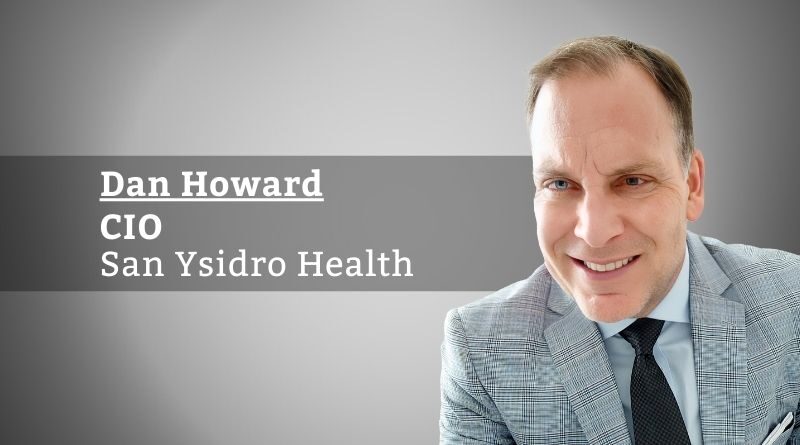Healthcare Interoperability: Why is it still a challenge?
By Dan Howard, CIO, San Ysidro Health
Some of you may remember the 1982 blockbuster movie E.T. the Extra-Terrestrial, in which a young boy named Elliot finds an alien visitor from another planet stranded in his backyard. Like most kids, Elliot decides to keep E.T. and thus begins an epic adventure involving his newfound friend as they hide from government agents who want to capture and study him, to fighting for E.T.’s life as the earth’s atmosphere is slowly killing him, culminating in a daring escape via bicycle to reunite him with his home planet. Communication is a common theme of the film and Elliott helps build a device so E.T. can “phone home.” This is retro-interoperability at its finest – consider what Elliot used to create E.T.’s communicator: a circa 1970’s Speak & Spell!, a Sears solid-state record player, a set of Fisher-Price walkie-talkies, a UHF tuner, a lantern battery, a coffee can, a wooden hanger, and an umbrella. In the movie, it worked and allowed for this random set of combined products and systems to interoperate and successfully send a message to E.T.’s alien compatriots. That was 40 years ago when roughly 50,000 transistors could sit on an Intel 80186 chip, whereas today’s high-end processors boast up to 50,000,000,000 transistors. With that level of technical complexity and an ever-moving target, it is no wonder that we are still seeing interoperability challenges between products and systems in healthcare today.
So why is interoperability still a challenge in healthcare? If we look at other industries – BFSI, manufacturing, retail, etc., they share a higher level of maturity for interoperability between differing systems and technologies. One could argue that the delta between healthcare and these other industries boils down to market pressures, incentives, consumer expectations and data complexity. Health systems are still figuring out that they are really in the retail business and learning to be more consumer-centric in delivering healthcare services. Many barriers to successful healthcare interop are not technical, rather business or culture roadblocks – but even these are not insurmountable. The following focus areas are a good jumping-off point for any health system looking to reach its interoperability goals.
Educate your patients on what you are doing to keep their trust as a good steward of their data.
Regulatory
The introduction of the 21st Century Cures act regulates the currency of patient data by ensuring your data is readily available and accessible. Run afoul of this requirement and you could be reported and face penalties and labeled a data blocker.
Action Item: Ensure you are running an EHR platform that supports open and certified APIs that encourages secure access to data for third-party applications. An outdated EHR certification is inadequate and does not satisfy the new requirements of the Cures Act Final Rule.
For the vibrant application ecosystem to reach its full potential, it needs to be underpinned by the open API framework. This will support continued innovation and added functionality in the application development space. The outcomes will reduce costs, increase patient safety, and bring enhanced data understanding to patients, providers, and health systems.
Data Consistency
There is still a considerable amount of disparate data in multiple systems in most health system networks. Much of this data is inconsistent, unstructured, and requires a significant amount of time from technology teams to search, abstract, load, transform and analyze.
Action Item: Create a unified network and data interface platform that will support uniformity across the various software platforms. Establishing a uniform dataset where siloed information is pulled and properly categorized is an initial step in being able to share the data. Patient portals are commonplace today, and your mileage may vary based on what data is being shared and how easily that data flows to that information hub. Consider AI and ML tools that can help in this process of getting your data house in order.
Organization Resistance to Data Sharing
In many geographic regions, healthcare systems still run in competitive market environments. With shrinking reimbursements, alternative payment models, and shifting customer loyalty, there have been vested reasons for not sharing data with outside entities and providers. Consider big city ERs or urgent care centers where Regulation now calls for this data to be accessible and available to any organization and ultimately, the patients themselves.
Action Item: Health systems should focus on an open model of sharing patient data that still retains security and privacy while getting the right information to the right party, in the right format, at the right time. This does require collaboration and partnering with the needed tools to execute. Adopt proper data standards, HL7 2.0, HL7 FHIR, etc. and begin the move to data liquidity and transparency.
Security & Consumer Sentiment
Privacy concerns are still a main reason why many patients do not want their health data shared. This is becoming even more relevant as consumers begin to generate their health data with mobile phones and smart wearables that collect heart rate, blood sugar levels, physical activity, and sleeping habits. Federal HIPAA laws requires that healthcare organizations and providers protect patient records, which becomes very complicated when the data points of entry are entirely outside a provider’s physical network.
Action Item: The new consumer healthcare solutions that use wearables and mobile phones produce a lot of data and typically don’t have as robust protections as health systems require. Ensure that your data strategy addresses where the patient-generated data is landing, how it is appropriately scanned to meet security standards, and how it is secured. HIPAA is a bare minimum; you should aim for NIST or HITRUST certifications for added protection and privacy. Educate your patients on what you are doing to keep their trust as a good steward of their data.
The promise of better-coordinated care, lower costs, and increased patient safety cannot be fully realized without seamless data exchange and access. There are many paths to reach this interoperability goal, and most will need a new organizational mindset, adoption of standards, alignment of technical capabilities and reduction in data fragmentation – with hard work and a bit of luck, we can build something that even E.T. would be proud of.



